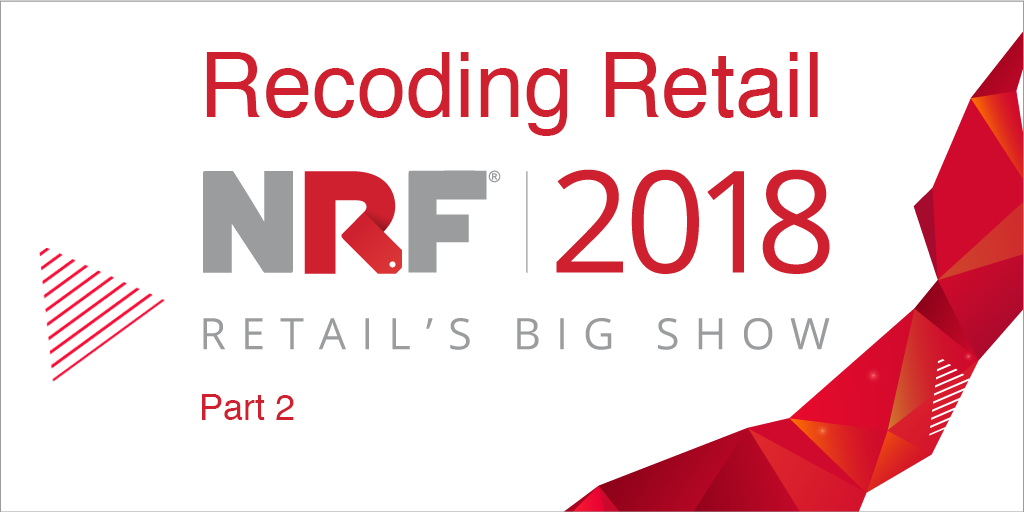Three Commandments of Great Retail Experience.
Alright, there are definitely a lot more than three really important things to consider when re-crafting your customer journey, but for the sake of simplicity, let’s focus down on three of the biggest.
#1 — Sales Associates should never need to leave the sales floor.
Never. Say it with me — never. Unless it’s for the bathroom, a rest break or time to go home, there is no reason why your sales person should be anything but customer facing. Simpler said than done, I know — but cmon, it’s 2018. If anyone leaves the floor, it should be your floor leadership but keep your sales people selling every chance they get. Now, if you can create a strategy (and deploy a solution) that allows your employees to access product information, training, team collaboration and retail execution tools without going out back, you’ve just done a few things:
- Not left the customer alone with their smartphone and their favorite eVendor, who chances are has the same product or something similar for a competitive cost and can ship it free to their house in less than 48 hours.
- Taken that precious downtime when customers aren’t in the store to get some tasks done, like merchandising or product research, without needing to run out back and leave the floor or your zone unattended.
- Instilled a sense of confidence in your customers that when they come in, they are the employees focus.
It still shakes me to my core when I walk into a store and need to ask a question and have to hunt for an employee. No wonder your business is flat-lining. You’re more concerned with merchandising 4,000 sweaters that didn’t get purchased during the holiday than greeting me as I arrive and allowing me to provide you an opportunity to differentiate yourself from online stores. Truly not your goal, I know, but this is reality.
Imagine a world where your employee could greet me warmly, pull out their iPad, look up product information for me, help guide me to a sale and as soon as I’m gone, use the same tool to execute a planogram, brush up on the latest product guide training or send a message to their inventory team that stock levels need replenishment. All while waiting for the next me to stroll in through the door. That world exists and it’s not a three-year project. It can be done in 90 days.
A quarter from now, your store coverage models would be tighter, your store employees would be better trained and your customers would spend longer in the store for the right reasons, not the wrong ones.
#2 — Training happens in the moment, not out back.
87% of training is forgotten in 30 days (Corporate Executive Board). Whether you have 10,000 skus or 100, we learn differently than we did a decade ago. Perhaps our discipline has slipped or maybe it’s the information overload we experience that makes process and product training so difficult to recall. Regardless of why, this is reality and I can attest to it after having led 150 brilliant employees at one of the world’s highest grossing retail stores.
If the learning isn’t in context, it’s not valuable.
Memory works in a funny way. If there isn’t emotion attached to an event, it’s really hard to recall. I sit here now, in my kitchen, crafting this blog on a Sunday afternoon and I can’t for the life of me remember what I had for breakfast yesterday. Maybe I have a bigger problem, but the reality is, this is where our sales associates are at on a daily basis. Until learning is tied to some sort of emotional event, be it joy, stress, anxiety or competition, they simply won’t recall the details. My breakfast yesterday was nothing special, out of ordinary or significant. Now, it’s gone baby gone from the vault in my head.
But, what if your employees could recall any learning or training they’ve ever had, in the moment, right when they need it? What if they could do it with the customer or task in front of them on the retail floor? What if you didn’t have to find a way to get all of your employees off the floor, during holiday hours, to take a mandatory safety training that someone in HR thought would be a great idea two weeks before Christmas? Well, a few things would occur (you might notice a theme emerging):
- Your employee wouldn’t have to leave the customer unattended while they went out back to your “training zone” to brush up on something you’ve invested hours into training them on already, all while the customer burns a hole in their credit card with one of your online competitors.
- You wouldn’t be wasting valuable time on store-wide trainings that the employees won’t retain or find valuable, all while putting stress on your floor coverage models.
- Your customers would work through the process with you, instilling trust in your staff’s commitment to their experience and breeding a sense of transparency in the process at retail.
Retail doesn’t have to be smoke and mirrors. You can build a sense of trust with your customers by including them in the discovery process, without leaving them to their own devices (again, literally) on the sales floor. There’s nothing wrong with telling them you don’t know the answer to the question — it’s what you do next that defines your brand. If you’re smart, you’ll bring them on the journey with you and learn a little together. Wash away that transactional feeling and take the “training zone” computers out with it.
#3 — Hire passionate people and nurture them.
Alright, this is the big one folks. If your sales managers, floor leaders and sales associates are showing up because a job is a job is a job, with no career aspirations in sight, you’ve got a bigger problem. I know the risk with hiring someone who tells you about their dreams to do something completely different than work for your company, but that drive is exactly what will make them interesting, engaging and supportive of your customer experience.
I was lucky to work for perhaps the most emotionally intelligent brand in the retail space, and our interviews consisted of only questions that dug into who they were, what our brand meant to them and where they want to be in a few years. These questions may seem familiar (many retailers use them). The difference is, we weren’t looking for a right and a wrong. We were simply curious about who they were, and if they expressed genuine curiosity in who we were, they were in. It was that simple.
I can tell you now that a leader at that major brand I worked for gave me that same chance. I had no direction, no relevant experience and no prepared answers. 3 years later, I was leading a business services team and a retail team for them. I was able to pay this same favor forward to other curious people and you know what, we absolutely crushed customer experience. We didn’t have VIP client ID technology. We didn’t have fancy shelf-scanners to let us know product was out. You know what we did have? The highest NetPromoter score (NPS) of any retail location in the world, through the holiday quarter 2016. We had nearly perfected the customer experience.
Your employees define your brand. If you don’t hire those you respect and you connect with, and you don’t give them the tools and opportunities to succeed, you’ll never succeed, no matter how much money you throw at the problem. Employees who lack curiosity will never find a way to make a meaningful connection with each customer and that’s the only way you’ll keep them coming back time and again, no matter how good the deal is online. It’s really that simple.
Be sure to check out Recoding Retail Part 3 where I share the coolest solutions I saw at NRF that spoke to the above and beyond.
In case you missed it, here's Part 1.


